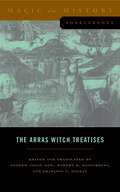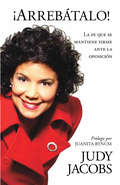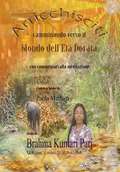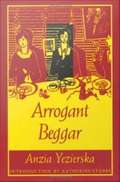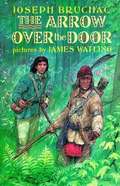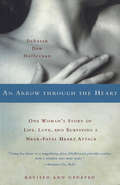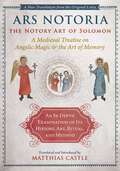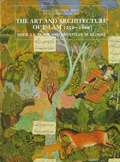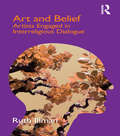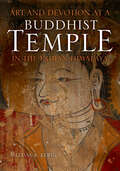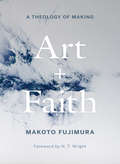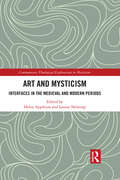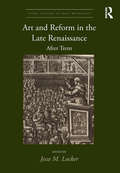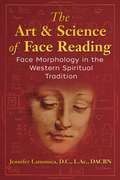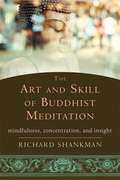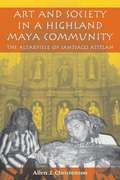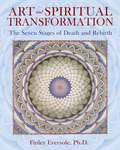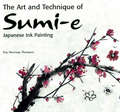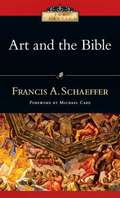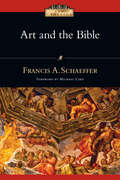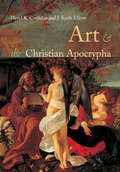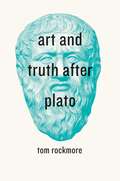- Table View
- List View
The Arras Witch Treatises: Johannes Tinctor's Invectives contre la secte de vauderie and the Recollectio casus, status et condicionis Valdensium ydolatrarum by the Anonymous of Arras (1460) (Magic in History Sourcebooks #1)
by Andrew Colin Gow Robert B. Desjardins François V. PageauThis is the first complete and accessible English translation of two major source texts—Tinctor’s Invectives and the anonymous Recollectio—that arose from the notorious Arras witch hunts and trials in the mid-fifteenth century in France. These writings, by the “Anonymous of Arras” (believed to be the trial judge Jacques du Bois) and the intellectual Johannes Tinctor, offer valuable eyewitness perspectives on one of the very first mass trials and persecutions of alleged witches in European history. More importantly, they provide a window onto the early development of witchcraft theory and demonology in western Europe during the late medieval period—an entire generation before the infamous Witches’ Hammer appeared. Perfect for the classroom, The Arras Witch Treatises includes a reader-friendly introduction situating the treatises and trials in their historical and intellectual contexts. Scholars, students, and others interested in the occult will find these translations invaluable.
!Arrebátalo!: La fe que se mantiene firme ante la oposición
by Judy Jacobs¡Aprende a caminar en el poder de la fe violenta! Párate firme y defiéndete con el arma más poderosa: la fe. Judy Jacobs comparte un mensaje que te llevará a un lugar de "fe violenta" en El, un lugar que está más allá de lo imaginario y fuera de los límites de la religión y tradición. Descubre cómo obtener una fe igual a la de Moisés, Jacob, Josué y Caleb, personajes que simplemente no desistían de lo que Dios tenía para ellos ni se conformaban con menos. Los principios bíbicos de estel ibro revelan: - Por qué las "soluciones a la ligera" no corresponden adecuadamente a las situaciones difíciles - El significado de "pelear la buena batalla de la fe" - Cómo investirse de poder al entender claramente el versículo de Mateo 11:12 - La autoridad que tú tienes en cristo para arrebatar y recuperar lo que por derecho te pertenece Dios quiere hacer lo inconcebible, lo innegable y lo increible a través de ti. ¿Te atreves a creerle a El con una fe violenta?
Arricchisciti camminando verso il Mondo dell’Età Dorata (con commentari alla meditazione)
by Brahma Kumari PariQuesto libro spiega come si può diventare ricchi, finanziariamente e/o spiritualmente, e ottenere tutto ciò che si desidera mentre si entra nell'Età Dorata.Verranno illustrate alcune pratiche da seguire per entrare e/o per arricchirsi e attraverso la padronanza e l'applicazione dei contenuti di questo libro, è possibile acquisire ricchezza, felicità, beatitudine e ottenere tutto ciò che si desidera. Oltre a fornire i chiarimenti necessari sulle varie dimensioni sottili che vengono utilizzate lungo il percorso verso il Mondo dell’Età Dorata, l'autrice ha spiegato: 1. le abilità magiche (siddhi) e le capacità che si sviluppano mentre si accede 2. perché/come funziona la Legge di Attrazione per portare ricchezza, felicità, povertà o miseria 3. perché e come le visualizzazioni possono materializzarsi 4. perché essere vicino alla dimensione superiore, dove si trovano i Registri Akashici, vi aiuterà a realizzare facilmente i vostri sogni 5. come si può facilmente svolgere il ruolo del creatore (Brahma) dal Brahmaloka 6. in che modo, quando ci si trova nel mondo di Brahma, l’Etere ricopre il ruolo di Brahma e crea ciò che si vuole 7. come utilizzando le energie dell'anima, si diventa sé divino o Brahma e quindi si è in grado di soddisfare i propri desideri e bisogni 8. come le cose si materializzano attraverso frequenze e risonanza 9. il ruolo della Dinastia del Sole e della Luna nei tempi antichi ed ora 10. come riacquistare ricchezza, prosperità e abilità magiche attraverso l'aldilà 11. come le energie quantiche, il dramma mondiale, la natura, ecc servono coloro che stanno accedendo al mondo dell'Età Dorata e che sono dell'Età Dorata 12. come vengono creati i nuovi corpi perfetti per coloro che accedono 13. come la terra ed il mondo vengono innalzati nell'Universo Superiore 14. come e perché è più facile ottenere ci
Arrogant Beggar
by Anzia YezierskaThe target of intense critical comment when it was first published in 1927, Arrogant Beggar's scathing attack on charity-run boardinghouses remains one of Anzia Yezierska's most devastating works of social criticism. The novel follows the fortunes of its young Jewish narrator, Adele Lindner, as she leaves the impoverished conditions of New York's Lower East Side and tries to rise in the world. Portraying Adele's experiences at the Hellman Home for Working Girls, the first half of the novel exposes the "sickening farce" of institutionalized charity while portraying the class tensions that divided affluent German American Jews from more recently arrived Russian American Jews. The second half of the novel takes Adele back to her ghetto origins as she explores an alternative model of philanthropy by opening a restaurant that combines the communitarian ideals of Old World shtetl tradition with the contingencies of New World capitalism. Within the context of this radical message, Yezierska revisits the themes that have made her work famous, confronting complex questions of ethnic identity, assimilation, and female self-realization. Katherine Stubbs's introduction provides a comprehensive and compelling historical, social, and literary context for this extraordinary novel and discusses the critical reaction to its publication in light of Yezierska's biography and the once much-publicized and mythologized version of her life story. Unavailable for over sixty years, Arrogant Beggar will be enjoyed by general readers of fiction and be of crucial importance for feminist critics, students of ethnic literature. It will also prove an exciting and richly rewarding text for students and scholars of Jewish studies, immigrant literature, women's writing, American history, and working-class fiction.
The Arrow Over the Door
by Joseph BruchacIn the year 1777 a group of Quakers and a party of Indians have a memorable meeting.
An Arrow Through the Heart
by Deborah Daw HeffernanIn the words of Mehmet Oz, MD: "An Arrow Through the Heart is an epiphany for women who mistakenly believe that they are immune from the ravages of heart disease. Using her heart as a magnifying glass, Deborah Daw Heffernan provides readers with a window into their souls." This groundbreaking memoir was first mentioned on Oprah Winfrey's life-saving 2002 show announcing cardiovascular disease as a leading cause of death among young women. That tragic fact is still true. With both depth and humor, Deborah Daw Heffernan recounts her first year of recovery from the massive heart attack that ambushed her in a gentle yoga class--during the prime of her life and despite her impeccable health history. Ranging from high-stakes action in the OR at Massachusetts General Hospital in Boston to quietly unfolding seasons on a lake in Maine, An Arrow Through the Heart is a moving and informative story of what it takes to find one's own path to true healing. Ultimately, Heffernan combines allopathic and complementary medicine to create a sensible recovery strategy for our times. She touchingly describes her husband's devotion and the toll that her cardiovascular disease takes on him, as well as how he, too, grew from the experience. Weaving their story with the lives of family and friends, Heffernan demonstrates how illness can be transformative for all involved. Not only an empowering companion for cardiac patients, this medical classic is a guide to recovery from catastrophic change of any kind. Above all, it is a powerful testament to the unexpected joy that can come from leading a life of acknowledged impermanence. Updates include cardiovascular data for today's reader, links to the author's website and other resources, a new section on SCAD (spontaneous coronary artery dissection), and-- spoiler alert--a heart transplant in 2006. All author's proceeds are donated to cardiac causes. Deborah Daw Heffernan is a graduate of Georgetown and Harvard Universities. She has worked as a teacher in Switzerland, an associate dean at Boston University, and a freelance writer. For fourteen years she was vice president of a leading Boston-based corporate training/consulting firm--until a near-fatal heart attack changed her life forever. She lives with her husband, Jack, on a small lake in Maine.
Ars Notoria: A Medieval Treatise on Angelic Magic and the Art of Memory
by Matthias CastleA new translation of the classic magical text from the original Latin• Learn how medieval magicians conducted the rituals of angelic magic for quickly learning scholastic knowledge by means of prayers and figures• Provides a complete translation of Ars Notoria, both the short and long versions based on Julien Veronese&’s critical Latin edition• Includes the first translation of The Work of Works (Opus Operum), The Short Art (Ars Brevis), the abridged version attributed to Thomas of Toledo, and The Pauline Art (Ars Paulina)• Presents all of the original figures (notae), essential for inspection during ritualThe 13th-century magical treatise Ars Notoria offers a secret account of the angel Pamphilius revealing the sacred magic to King Solomon by which he gained his famed wisdom and learning, thereby expanding upon the biblical narrative in which Solomon received a vision of God. Solomon&’s writings were transmitted to the first-century philosopher, Apollonius of Tyana, who provided a commentary entitled the Golden Flowers (Flores Aurei), which is contained within Ars Notoria.The magical text presents a complete system of angelic magic consisting of prayers addressed to angels, using figures called notae, for the purpose of acquiring scholastic and heavenly knowledge. Due to its rising popularity among university students, the magical ritual was reworked time and again, producing five treatises, dating from the 13th to 15th centuries; The Work of Works (Opus Operum), the Book of Flowers of Heavenly Teaching composed by the French Benedictine monk named John of Morigny, The Short Art (Ars Brevis), the abridged version attributed to Thomas of Toledo, and The Pauline Art (Ars Paulina), thereby establishing an entire notorial art tradition.In this new and complete translation of Ars Notoria, based on Julien Veronese&’s critical Latin edition, translator Matthias Castle presents the classic magical text, both short and long versions, including four of the later treatises. Castle explains how these theurgic ritual practices were performed, giving special attention to all the original pictorial figures (notae), and how the art of memory relates to angelic magic. Providing practical instruction, extensive commentary, and in-depth background research and annotations, Ars Notoria: The Notory Art of Solomon is an essential sourcebook on angelic magic for scholar and magician alike.
The Art and Architecture of Islam, 1250-1800
by Sheila S. Blair Jonathan M. BloomThe authors present a provocative essay on the varied legacies of Islamic art in Europe and the Islamic lands in the nineteenth and twentieth centuries.
Art and Belief: Artists Engaged in Interreligious Dialogue (Cross Cultural Theologies Ser.)
by Ruth Illman'Art and Belief' explores communication between faiths through an examination of contemporary artistic practice. The book discusses how a range of artists formulate their worldview and what motivates them to engage in dialogue. These artists are engaged in a wide range of artistic forms and practice and come to dialogue from diverse religious positions. The aim of the book is to question the assumptions of interreligious dialogue as a largely intellectual exercise in defining the religious "other" and to explore dialogue as a manifestation of interpersonal ethics.
Art and Devotion at a Buddhist Temple in the Indian Himalaya (Contemporary Indian Studies)
by Melissa R. KerinA study of a set of sixteenth-century wall paintings at the Gyapagpa Temple in Nako, a village in India’s Himachal Pradesh state.Sixteenth-century wall paintings in a Buddhist temple in the Tibetan cultural zone of northwest India are the focus of this innovative and richly illustrated study. Initially shaped by one set of religious beliefs, the paintings have since been reinterpreted and retraced by a later Buddhist community, subsumed within its religious framework and communal memory. Melissa Kerin traces the devotional, political, and artistic histories that have influenced the paintings’ production and reception over the centuries of their use. Her interdisciplinary approach combines art historical methods with inscriptional translation, ethnographic documentation, and theoretical inquiry to understand religious images in context.“A meticulous and discerning piece of scholarship, one that is skillful in employing multiple methods—visual, linguistic and ethnographic—to create a fuller picture of a region we knew little about. . . . [A] pleasure to read.” —Pika Ghosh, author of Making Kantha, Making Home: Women at Work in Colonial Bengal“Emphasizing the visual as primary evidence in the study of history, especially religious history, Kerin moves Buddhist art from the arena of museum displays, art markets, and aesthetics to the arena of dynamic interdisciplinary discourse, thus reaffirming the significance of in situ study. . . . Recommended.” —Choice“A forceful study on the specificity of Gyapagpa’s painting.” —South Asia Research/DESC>Indian art;south asian art;religious art;buddhist art;Indian history;south asian history;tibetan buddhism;buddhism;religion;indian buddhists;temple art;nako;gyapagpa;social history;political history;painting style;painting traditionART019020 ART / Asian / Indian & South AsianART035000 ART / Subjects & Themes / ReligiousHIS062000 HISTORY / Asia / South / India *REL007050 RELIGION / Buddhism / Tibetan9780253010032Patterns of War—World War IILarry H. Addington
Art and Faith: A Theology of Making
by Makoto FujimuraFrom a world-renowned painter, an exploration of creativity&’s quintessential—and often overlooked—role in the spiritual life "Makoto Fujimura is the rare artist whose life has something of the same purifying and galvanizing force of his work. His new book brings those two elements—life and art—even closer together, and is a real tonic for our atomized time." —Christian Wiman Conceived over thirty years of painting and creating in his studio, this book is Makoto Fujimura&’s broad and deep exploration of creativity and the spiritual aspects of &“making.&” What he does in the studio is theological work as much as it is aesthetic work. In between pouring precious, pulverized minerals onto handmade paper to create the prismatic, refractive surfaces of his art, he comes into the quiet space in the studio, in a discipline of awareness, waiting, prayer, and praise. Ranging from the Bible to T. S. Eliot, and from Mark Rothko to Japanese Kintsugi technique, he shows how unless we are making something, we cannot know the depth of God&’s being and God&’s grace permeating our lives. This poignant and beautiful book offers the perspective of, in Christian Wiman&’s words, &“an accidental theologian,&” one who comes to spiritual questions always through the prism of art.
Art and Mysticism: Interfaces in the Medieval and Modern Periods (Contemporary Theological Explorations in Mysticism)
by Helen Appleton Louise NelstropFrom the visual and textual art of Anglo-Saxon England onwards, images held a surprising power in the Western Christian tradition. Not only did these artistic representations provide images through which to find God, they also held mystical potential, and likewise mystical writing, from the early medieval period onwards, is also filled with images of God that likewise refracts and reflects His glory. This collection of essays introduces the currents of thought and practice that underpin this artistic engagement with Western Christian mysticism, and explores the continued link between art and theology. The book features contributions from an international panel of leading academics, and is divided into four sections. The first section offers theoretical and philosophical considerations of mystical aesthetics and the interplay between mysticism and art. The final three sections investigate this interplay between the arts and mysticism from three key vantage points. The purpose of the volume is to explore this rarely considered yet crucial interface between art and mysticism. It is therefore an important and illuminating collection of scholarship that will appeal to scholars of theology and Christian mysticism as much as those who study literature, the arts and art history.
Art and Reform in the Late Renaissance: After Trent (Visual Culture in Early Modernity)
by Jesse M. LockerDrawing on recent research by established and emerging scholars of sixteenth- and seventeenth-century art, this volume reconsiders the art and architecture produced after 1563 across the conventional geographic borders. Rather than considering this period a degraded afterword to Renaissance classicism or an inchoate proto-Baroque, the book seeks to understand the art on its own terms. By considering artists such as Federico Barocci and Stefano Maderno in Italy, Hendrick Goltzius in the Netherlands, Antoine Caron in France, Francisco Ribalta in Spain, and Bartolomeo Bitti in Peru, the contributors highlight lesser known "reforms" of art from outside the conventional centers. As the first text to cover this formative period from an international perspective, this volume casts new light on the aftermath of the Renaissance and the beginnings of "Baroque."
The Art and Science of Face Reading: Face Morphology in the Western Spiritual Tradition
by Jennifer LamonicaA complete, illustrated guide to the ancient tradition of reading the face to gain insight into health, personality, relationships, and career • Details how to read the profile, front face, features, and musculature of the face to reveal temperament, personality traits, health predispositions, and mental state • Explores the history and development of face morphology from its origins in Israel and Egypt more than 4,500 years ago to its modern use in French medical schools • Examines the Foursquare diagram, developed by French occultist Papus, for highly accurate and detailed facial readings The face is a unique reflection of our genetic, inherited inclinations as well as the effects that life, nature, and relationships have had upon us. By looking at a person’s face, you can gain valuable insight into their personality, health, and how they navigate in the world. In this illustrated guide, Jennifer Lamonica reveals the sacred tradition of face morphology, an esoteric system that has been passed quietly from rabbi to student as an unbroken oral tradition for more than 4,500 years. She explores the history and development of this ancient art from its origins in Israel and Egypt to its use as the major diagnostic system in Europe until the Enlightenment and its current applications in French medical schools. Sharing the techniques of master face readers, the author details how to read the angles of the profile, as well as palm color and nose shape, to determine a person’s temperament, providing health and career insight into each of the four temperaments, including nutritional needs, digestive issues, sleep patterns, health predispositions, and ideal occupational paths. Exploring the Foursquare diagram, developed by French occultist Papus, for highly accurate and detailed facial readings, she explains how to read the front face in combination with planetary shapes, which reveal a person’s character; the major facial features, such as eyebrows, which reveal personal inclinations; and the musculature of the face, including expressions, which reveals a person’s current mental state. Providing case studies, she examines how to apply face morphology in relationships and in parenting. Exploring the meaning of each facial variation, while also honoring the intuitive impression received at first glance, Lamonica reveals how the ancient science of face reading allows you to compassionately help your loved ones, students, or clients, as well as overcome personal obstacles and better know yourself.
The Art and Skill of Buddhist Meditation: Mindfulness, Concentration, and Insight
by Richard ShankmanFor the first time ever, a leading Insight meditation teacher presents an innovative and practical guide to building a strong meditation practice by unifying both concentration and insight meditation. In our busy modern world, it's easy to get stressed out. In The Art and Skill of Buddhist Meditation, mindfulness teacher Richard Shankman offers a foundational guide to the art and skill of Buddhist meditation, showing you how to construct a calming daily practice that unifies two major Vipassana Buddhist traditions--concentration meditation and insight meditation. Whether you are a beginning or intermediate student of Buddhism, this book provides a user-friendly meditation regime. New readers are presented with a strong foundation in multiple meditation approaches, while those who've been training for a while will be able to better integrate what they've already learned with new and unfamiliar approaches drawn from other streams of Buddhist thought. This new, integrative, and simple approach to meditation will help you to better manage stress, quiet your busy mind, and cultivate a lasting sense of well-being.
Art and Society in a Highland Maya Community
by Allen J. Christenson"Allen J. Christenson offers us in this wonderful book a testimony to contemporary Maya artistic creativity in the shadow of civil war, natural disaster, and rampant modernization. Trained in art history and thoroughly acquainted with the historical and modern ethnography of the Maya area, Christenson chronicles in this beautifully illustrated work the reconstruction of the central altarpiece of the Maya Church of Tz'utujil-speaking Santiago Atitlán, Guatemala. The much-loved colonial-era shrine collapsed after a series of destructive earthquakes in the twentieth century. Christenson's close friendship with the Chávez brothers, the native Maya artists who reconstructed the shrine in close consultation with village elders, enables him to provide detailed exegesis of how this complex work of art translates into material form the theology and cosmology of the traditional Tz'utujil Maya. With the author's guidance, we are taught to see this remarkable work of art as the Maya Christian cosmogram that it is. Although it has the triptych form of a conventional Catholic altarpiece, its iconography reveals a profoundly Maya narrative, replete with sacred mountains and life-giving caves, with the whole articulated by a central axis mundi motif in the form of a sacred tree or maize plant (ambiguity intended) that is reminiscent of well-known ancient Maya ideas. Through Christenson's focused analysis of the iconography of this shrine, we are able to see and understand almost firsthand how the modern Maya people of Santiago Atitlán have remembered the imagined universe of their ancestors and placed upon this sacred framework their received truths in time present. "--Gary H. Gossen, Distinguished Professor Emeritus of Anthropology and Latin American Studies, University at Albany, SUNY
Art and Spiritual Transformation: The Seven Stages of Death and Rebirth
by Finley EversoleThe primal role of art in awakening and liberating the soul of humanity • Presents a seven-stage journey of transformation moving from the darkened soul to the light of spiritual illumination • Provides a meditation practice to experience the spiritual energy embedded within art • Includes artists Alex Grey, Jackson Pollock, Mark Rothko, Walter Gaudnek, and others Art and Spiritual Transformation presents a seven-stage journey from the darkened soul to the light of spiritual illumination that is possible through the world of art. Finley Eversole introduces a meditation practice that moves beyond the visual content of an art form in order to connect with its embedded spiritual energy, allowing the viewer to tap in to the deeper consciousness inherent in the artwork and awaken dormant powers in the depths of the viewer’s soul. Examining modern and postmodern artwork from 1945 onward, Eversole reveals the influences of ancient Egypt, India, China, and alchemy on this art. He draws extensively on philosophy, myth and symbolism, literature, and metaphysics to explain the seven stages of spiritual death and rebirth of the soul possible through art: the experience of self-loss, the journey into the underworld, the experience of the dark night of the soul, the conflict with and triumph over evil, the awakening of new life in the depths of being, and the return and reintegration of consciousness on a higher plane of being, resulting finally in ecstasy, transfiguration, illumination, and liberation. To illustrate these stages, Eversole includes works by abstract expressionists Jackson Pollock, Willem de Kooning, and Mark Rothko and modern visionary artists Alex Grey and Ernst Fuchs, among others, to reveal the powerful and liberating forces art contributes to the transformation and evolution of human consciousness.
The Art and Technique of Sumi-e Japanese Ink Painting
by Kay Morrissey ThompsonThe art of sumi-e, which literally means "ink picture," combines calligraphy and ink-painting to produce compositions of rare beauty. This beauty is paradoxical-ancient but modern, simple but complex, bold but subdued-no doubt reflecting the arts spiritual basis in Zen Buddhism. At the same time sumi-e is firmly rooted in the natural world, its various techniques serving as the painter's language for describing the wonders of nature.Art and Technique of Sumi-e Japanese Ink-Painting explores this ancient technique. Buddhist priests brought the ink stick and the bamboo-handled brush to Japan from China in the sixth century, and over the past fourteen centuries Japan has developed a rich heritage of ink-painting. Today the artistry of sumi-e can be admired in books, reproductions and museums, but the techniques of the art have been much less accessible. As a result, little information has been available to the inquisitive Western artist attracted to ink-painting. This book, designed to help remedy that deficiency, is the product of the author's study with her teacher, Ukai Uchiyama, master calligraphist and artist.
Art and the Bible
by Francis A. SchaefferMany Christians, wary of creating graven images, have steered clear of artistic creativity. But the Bible offers a robust affirmation of the arts. The human impulse to create reflects our being created in the image of a creator God. Art and the Bible has been a foundational work for generations of Christians in the arts. In this book's classic essays, Francis Schaeffer first examines the scriptural record of the use of various art forms, and then establishes a Christian perspective on art. With clarity and vigor, Schaeffer explains why "the Christian is the one whose imagination should fly beyond the stars."
Art and the Bible: Two Essays (IVP Classics)
by Francis A. Schaeffer"The lordship of Christ should include an interest in the arts," writes Francis Schaeffer. "A Christian should use these arts to the glory of God, not just as tracts, mind you, but as things of beauty to the praise of God." Many Christians, wary of creating graven images, have steered clear of artistic creativity. But the Bible offers a robust affirmation of the arts. The human impulse to create reflects our being created in the image of a creator God. Art and the Bible has been a foundational work for generations of Christians in the arts. In this book's classic essays, Francis Schaeffer first examines the scriptural record of the use of various art forms, and then establishes a Christian perspective on art. With clarity and vigor, Schaeffer explains why "the Christian is the one whose imagination should fly beyond the stars."
Art and the Christian Apocrypha
by David R. Cartlidge J. Keith ElliotThe Christian canon of scripture, known as the New Testament, excluded many of the Church's traditional stories about its origins. Although not in the Bible, these popular stories have had a powerful influence on the Church's traditions and theology, and a particularly marked effect on visual representations of Christian belief. This book provides a lucid introduction to the relationship between the apocryphal texts and the paintings, mosaics, and sculpture in which they are frequently paralleled, and which have been so significant in transmitting these non-Biblical stories to generations of churchgoers.
Art and the Church: Ecclesiastical Encounters with Contemporary Art
by Jonathan Koestle-CateA vibrant critical exchange between contemporary art and Christianity is being increasingly prompted by an expanding programme of art installations and commissions for ecclesiastical spaces. Rather than 'religious art' reflecting Christian ideology, current practices frequently initiate projects that question the values and traditions of the host space, or present objects and events that challenge its visual conventions. In the light of these developments, this book asks what conditions are favourable to enhancing and expanding the possibilities of church-based art, and how can these conditions be addressed? What viable language or strategies can be formulated to understand and analyse art's role within the church? Focusing on concepts drawn from anthropology, comparative religion, art theory, theology and philosophy, this book formulates a lexicon of terms built around the notion of encounter in order to review the effective uses and experience of contemporary art in churches. The author concludes with the prognosis that art for the church has reached a critical and decisive phase in its history, testing the assumption that contemporary art should be a taken-for-granted element of modern church life. Art and the Church: A Fractious Embrace uniquely combines conceptual analysis, critical case studies and practical application in a rigorous and inventive manner, dealing specifically with contemporary art of the past twenty-five years, and the most recent developments in the church's policies for the arts.
Art and the Religious Image in El Greco’s Italy
by Andrew R. CasperArt and the Religious Image in El Greco’s Italy is the first book-length examination of the early career of one of the early modern period’s most notoriously misunderstood figures. Born around 1541, Domenikos Theotokopoulos began his career as an icon painter on the island of Crete. He is best known, under the name “El Greco,” for the works he created while in Spain, paintings that have provoked both rapt admiration and scornful disapproval since his death in 1614. But the nearly ten years he spent in Venice and Rome, from 1567 to 1576, have remained underexplored until now. Andrew Casper’s examination of this period allows us to gain a proper understanding of El Greco’s entire career and reveals much about the tumultuous environment for religious painting after the Council of Trent.Art and the Religious Image in El Greco’s Italy is a new book in the Art History Publication Initiative (AHPI), a collaborative grant from the Andrew W. Mellon Foundation. Thanks to the AHPI grant, this book will be available in popular e-book formats.
Art and the Religious Image in El Greco’s Italy
by Andrew R. CasperArt and the Religious Image in El Greco’s Italy is the first book-length examination of the early career of one of the early modern period’s most notoriously misunderstood figures. Born around 1541, Domenikos Theotokopoulos began his career as an icon painter on the island of Crete. He is best known, under the name “El Greco,” for the works he created while in Spain, paintings that have provoked both rapt admiration and scornful disapproval since his death in 1614. But the nearly ten years he spent in Venice and Rome, from 1567 to 1576, have remained underexplored until now. Andrew Casper’s examination of this period allows us to gain a proper understanding of El Greco’s entire career and reveals much about the tumultuous environment for religious painting after the Council of Trent.Art and the Religious Image in El Greco’s Italy is a new book in the Art History Publication Initiative (AHPI), a collaborative grant from the Andrew W. Mellon Foundation. Thanks to the AHPI grant, this book will be available in popular e-book formats.
Art and Truth after Plato
by Tom RockmoreDespite its foundational role in the history of philosophy, Plato’s famous argument that art does not have access to truth or knowledge is now rarely examined, in part because recent philosophers have assumed that Plato’s challenge was resolved long ago. In Art and Truth after Plato, Tom Rockmore argues that Plato has in fact never been satisfactorily answered—and to demonstrate that, he offers a comprehensive account of Plato’s influence through nearly the whole history of Western aesthetics. Rockmore offers a cogent reading of the post-Platonic aesthetic tradition as a series of responses to Plato’s position, examining a stunning diversity of thinkers and ideas. He visits Aristotle’s Poetics, the medieval Christians, Kant’s Critique of Judgment, Hegel’s phenomenology, Marxism, social realism, Heidegger, and many other works and thinkers, ending with a powerful synthesis that lands on four central aesthetic arguments that philosophers have debated. More than a mere history of aesthetics, Art and Truth after Plato presents a fresh look at an ancient question, bringing it into contemporary relief.
